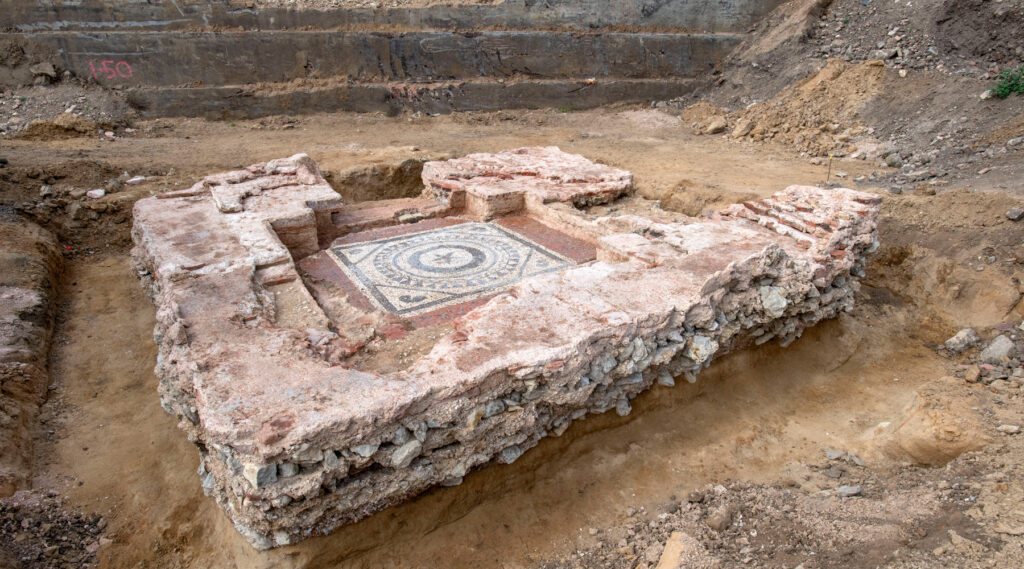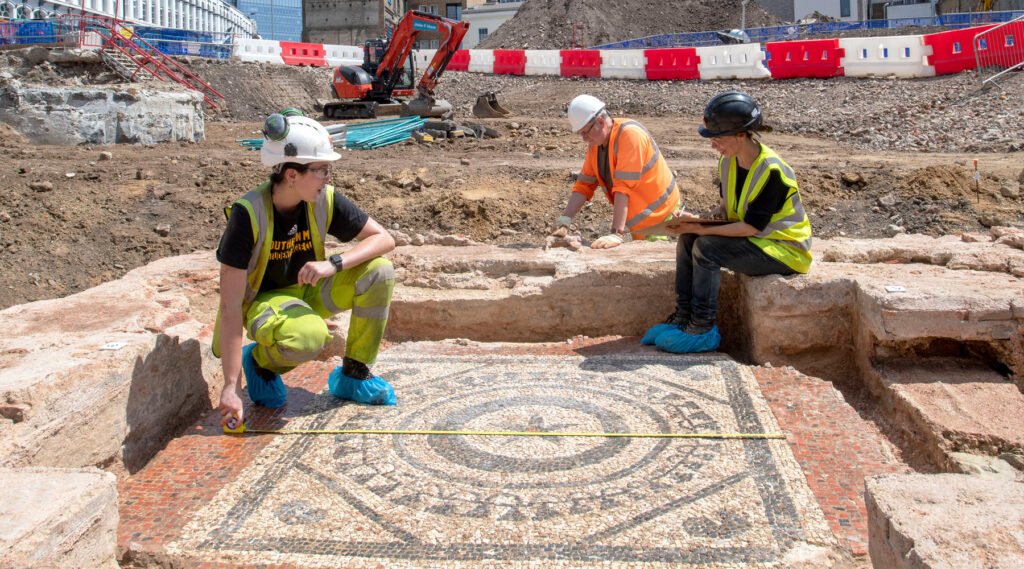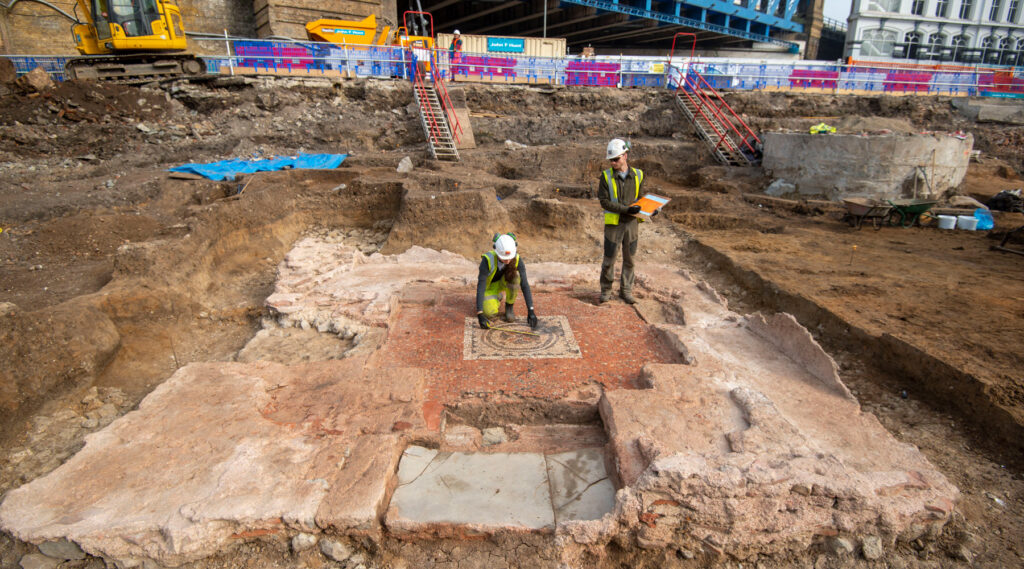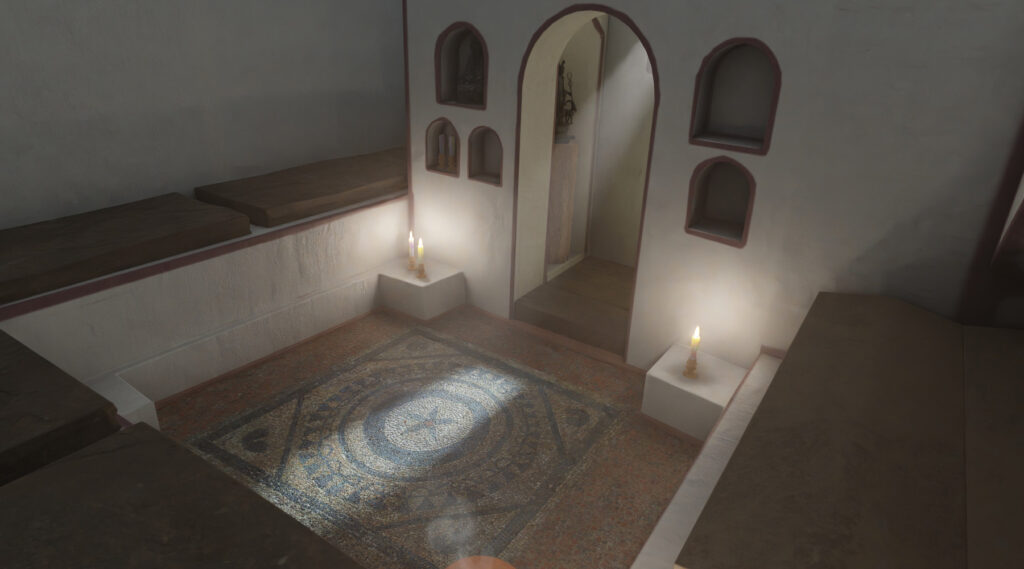The most intact Roman mausoleum ever found in Britain has been discovered in south London, on a site that already revealed some of the largest Roman mosaics found in London for over 50 years.
The site is close to London Bridge in Southwark and is being studied by archaeologists ahead of a housing development being built there. Last year, several substantial mosaics were discovered on the site, confirming that it was the location of a fairly important Roman building, and now, an exceptionally rare and well preserved Roman mausoleum has also been discovered.
The mausoleum has been described by experts as “completely unique.”
Archaeological investigations have been led by Museum of London Archaeology (MOLA), on behalf of Landsec and Transport for London (TfL), who own the site, and Southwark Council.
The site was originally cleared for the construction of the Jubilee line extension as a worksite with a large shaft dug down to the tunnels. The area of the shaft was checked by archaeologists at the time, but just a few metres away untouched lay the remarkable Roman remains that have been uncovered over the past year.
The remains of the mausoleum (a type of monumental tomb) that’s been uncovered include the walls and interior flooring. At its centre is a striking mosaic surrounded by a raised platform on which the burials were placed. The lowest entrance steps into the structure also survive. Significantly, this level of preservation of the interior makes this the most intact Roman mausoleum ever to be discovered in Britain.
Landsec and TfL are working together in a joint venture partnership on The Liberty of Southwark development and have also confirmed that they intend to restore and retain the mausoleum within the permanent scheme for public display. The future display of the mausoleum will provide a tangible link between the Roman archaeology of Southwark and the site on which the artefacts were found, making these unique discoveries publicly accessible.
Antonietta Lerz, Senior Archaeologist at MOLA – “This relatively small site in Southwark is a microcosm for the changing fortunes of Roman London – from the early phase of the site where London expands and the area has lavishly decorated Roman buildings, all the way through to the later Roman period when the settlement shrinks and it becomes a more quiet space where people remember their dead. It provides a fascinating window into the living conditions and lifestyle in this part of the city in the Roman period.”
The mausoleum appears to have undergone significant modifications during its lifetime and archaeologists uncovered a second mosaic directly beneath the first – indicating the floor of the structure was raised during its lifetime. The two mosaics are similar in design, with a central flower surrounded by a pattern of concentric circles set within a pavement formed of small red tiles.
The walls of the structure were almost completely dismantled, probably during the medieval period, for reuse elsewhere. However, all signs indicate this was a substantial building, perhaps two storeys high, requiring large buttresses in the corners for support.
Alongside the mosaics, the mausoleum contained a raised platform formed of tiles bonded with a hard wearing and waterproof pink mortar known as opus signinum. The platform defined the locations for the burials, arranged around three sides of the structure parallel to the walls. The mausoleum would have been used by wealthier members of Roman society. It may have been a family tomb or perhaps belonged to a burial club, where members would have paid a monthly fee to be buried inside.
Archaeologists didn’t find any of the coffins or burials that would have originally been inside the mausoleum. However, over 100 coins were discovered, together with some scrap pieces of metal, fragments of pottery and roofing tiles. Furthermore, the area immediately surrounding the mausoleum contained over 80 Roman burials, which included personal items such as copper bracelets, glass beads, coins, pottery, and even a bone comb.
This collaboration to safely excavate the site ahead of construction has now concluded. Yet, work to process and fully understand the finds continues. Among other areas of investigation, MOLA specialists will be working to pinpoint an exact date for the mausoleum.
There’s also a 3D image of the site here.











wow